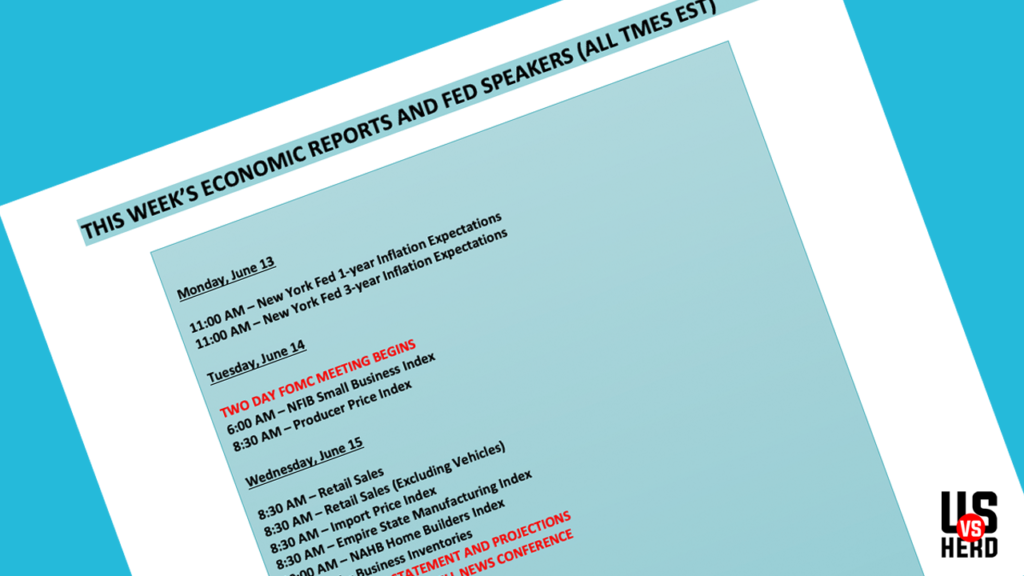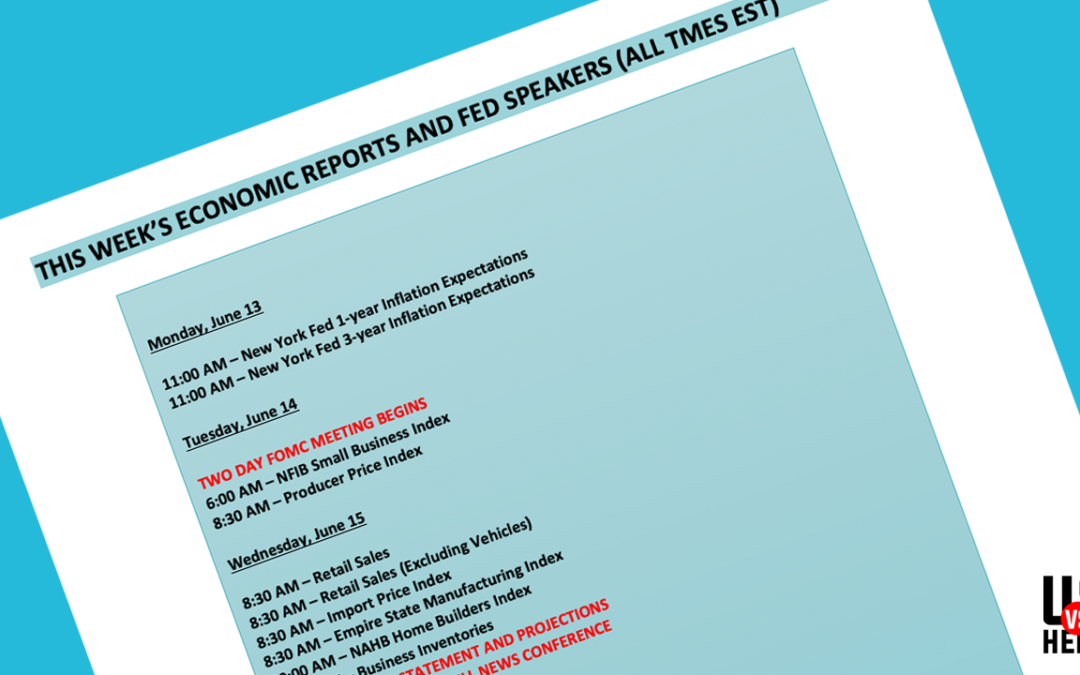
Each week, a number of key economic reports are published detailing various aspects of the state of the economy. These reports are scrutinized by investors for the information they provide on economic conditions, trends, and developments that can aid in making stock market decisions. The information these reports reveal can often themselves be significant catalysts for stock market volatility.
Us vs Herd publishes a schedule of these reports each week in our Impact Report. Schedules can also be found on the websites of various news and government agencies. The specific reports are usually available to the public online.
If you’re new to market-watching and following these economic reports, they often contain numerous acronyms that may be hard to understand at first. Below is a list of some of the most frequent used terms used and what they mean…
ADP – The ADP Employment Report is published by ADP (Automatic Data Processing), a private company providing human resources management software and services. Their monthly report provides information on the U.S. nonfarm private sector employment using actual transactional payroll data.
CPI – Consumer Price Index. Indicates levels of inflation. It’s a measure of the average change overtime in the prices paid by urban consumers for a market basket of consumer goods and services.
FHFA — The Federal Housing Finance Agency provides supervision, regulation, and housing mission oversight of Fannie Mae, Freddie Mac, and the Federal Home Loan Banks.
FOMC — The Federal Open Market Committee. The FOMC consists of twelve members — the seven members of the Board of Governors of the Federal Reserve System; the president of the Federal Reserve Bank of New York; and four of the remaining eleven Reserve Bank presidents, who serve one-year terms on a rotating basis.
HMI — Home Builder’s Market Index (see NAHB, below)
ISM – Institute for Supply Management. The ISM survey is a key indicator of the state of the U.S. economy. Formally called the Manufacturing ISM Report on Business.
NAHB — The National Association of Home Builders (NAHB) produces the Home Builder’s Market Index (HMI) every month to gauge builder sentiment regarding the demand side of the single-family housing market in the US.
NFIB – National Association of Independent Business. They publish the Small Business Optimism Index, a composite of ten seasonally adjusted components. It provides an indication of the health of small businesses in the U.S.
PMI – Purchasing Managers’ Index is an economic indicator which is derived after monthly surveys of different companies. The index shows trends in both the manufacturing and services sector.
PPI – Producer Price Index. The PPI is a family of indexes that measures the average change over time in selling prices received by domestic producers of goods and services. PPIs measure price change from the perspective of the seller.
SAAR — A Seasonally Adjusted Annual Rate is a rate modification used for economic or business data, such as sales numbers or employment figures, that attempts to remove seasonal variations in the data.

